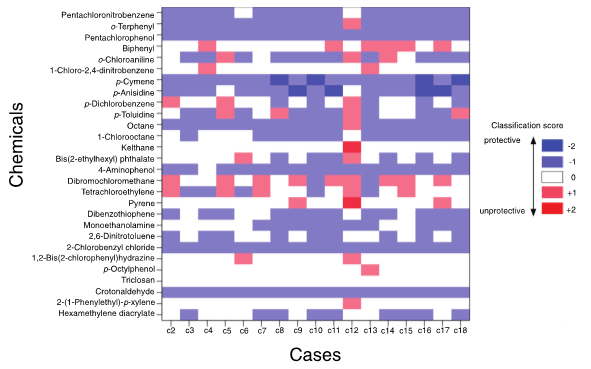Information of Paper
Quantitative analyses of misclassification rates in the hazard classification of environmental chemicals: Evaluation of procedures for deriving predicted no‐effect concentrations in the Chemical Substance Control Law in Japan
Authors:Takehiko I. Hayashi, Ayako Furuhama, Hiroyuki Yokomizo, Hiroshi Yamamoto
Year:2022
Journal:Risk Analysis
Keywords
chemical risk assessment, chemical substance control law, ecotoxicity, hazard classification, integrated approaches to testing and assessment
Abstract
The quality of chemical management depends more or less on practical procedures used to assess chemicals. This study quantitatively assessed the efficacy of a derivation procedure for calculating no-effect concentrations for screening assessment of environ- mental hazards under the Chemical Substance Control Law in Japan. We first evaluated the derivation procedure by applying a series of test ecotoxicity datasets to the procedure and calculating the resulting misclassification rates of the hazardous class of chemicals. In this study, a chemical was deemed to have been misclassified if its classification differed from its classification based on the full dataset (chronic toxicity data for three trophic levels), which was defined as the correct assignment. We also calculated the effects of additional uncertainty factors to decrease the variance (i.e., to improve the consistency) of the misclassification rates among cases with different data availability in the derivation procedure. The results showed that the derivation procedure resulted in very high rates of misclassification when only particular sets of ecotoxicity data were available (e.g., only chronic toxicity data of algae were available). Our analyses also showed that the use of additional uncertainty factors improved the consistency of the misclassification rates within the derivation procedure. Our study presents a broadly applicable calculation framework for quantifying error rates in assessment procedures and serves as a case study for future development and reforms of chemical assessment processes and policies, while additional analyses using more extensive ecotoxicity data with various modes of actions are needed in the future.

Figure 1. Illustration of the evaluation of classification ability for the combination of the breakdown of ecotoxicity data present (Cases) and the chemicals to be classified (Chemicals). In particular, Case c12 (only chronic toxicity data for algae exist) shows that the classification ability is low for many chemicals.




